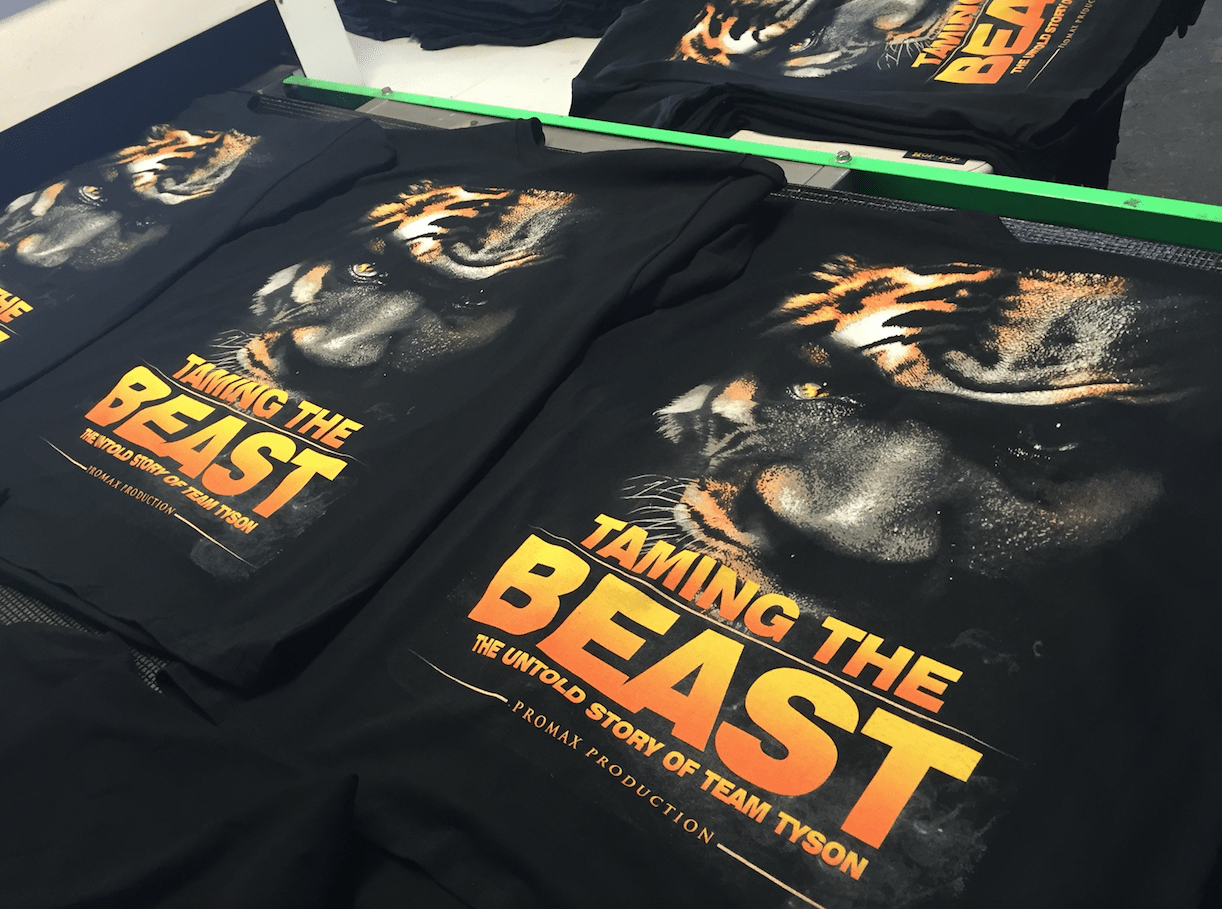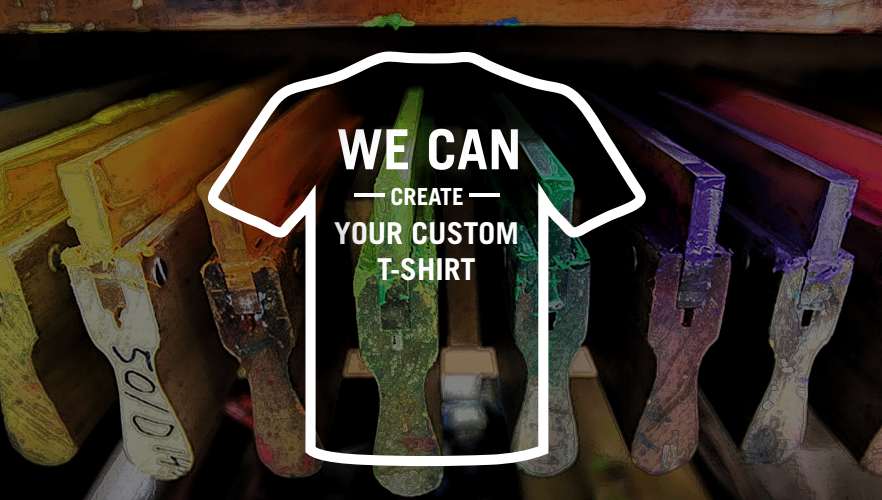Beginner-Friendly Screen Printing Kit for DIY Projects
Beginner-Friendly Screen Printing Kit for DIY Projects
Blog Article
Screen Printing Uncovered: Whatever You Required to Understand About Tee Shirt and Garment Printing Methods
If you've ever before wondered exactly how those dynamic layouts wind up on your preferred t-shirts, you remain in the right place. Screen printing is a remarkable approach that incorporates art with technique, offering endless possibilities for creativity. Understanding the basics, from tools to ink selections, can greatly impact your results. Ready to discover the necessary components that make display publishing an art type? Let's reveal the information that can boost your tasks.
The Fundamentals of Display Printing: Just How It Works
When you dive into screen printing, you'll discover it's both a science and an art. At its core, screen printing entails developing a stencil, or display, that enables ink to go through just in particular areas (screen printing kit). You start by picking your style and preparing your screen with a light-sensitive emulsion. As soon as you reveal this solution to light, it hardens, leaving your style as an adverse space.
Following, you'll blend your inks and prepare your printing surface area. Position the display over the material, then use a squeegee to push ink through the display onto the garment. This process requires precision, as you desire clear, dynamic prints. After printing, you'll cure the ink with heat, ensuring it follows the material and lasts via cleans. Each action is important, and grasping them will certainly boost your screen printing abilities, transforming simple garments right into distinct, meaningful items.
Kinds Of Screen Printing Methods
Once you understand the fundamentals of display printing, it's time to discover the different techniques that can boost your styles. One popular method is traditional display printing, where ink is pushed through a stenciled screen. This method is fantastic for strong, lively shades. After that there's water-based ink printing, which offers a softer feel and is green, but it calls for a different method to treating.
An additional alternative is plastisol printing, recognized for its longevity and vivid colors, making it a favorite for lots of brands. Experiment with halftone printing to produce slope effects and elaborate designs.
Crucial Devices for Screen Printing
To achieve magnificent results in screen printing, having the right equipment is basic. You'll need a durable screen printing frame, which holds the mesh that moves your design onto the garment. Next, invest in top notch mops; these are important for applying ink uniformly across the screen.
Selecting the Right Inks and Products
When selecting inks and materials for screen printing, you require to think about the sort of ink that works best for your job. Consider textile compatibility to ensure your designs look great and last long. Also, discover environmentally friendly ink choices to make your printing process more lasting.
Kinds of Screen Inks
Picking the ideal screen ink is vital for attaining dynamic, resilient prints that fulfill your job's requirements. There are several sorts of screen inks to analyze. Plastisol ink is popular for its versatility and convenience of usage, offering excellent shade opacity on dark textiles. Water-based ink, on the various other hand, uses a softer feel and is eco-friendly, making it ideal for those aiming to decrease their environmental influence. Discharge inks get rid of color from the fabric, causing a soft, vintage appearance yet require details handling. Lastly, specialized inks, such as glow-in-the-dark or metal, can add special effects to your designs. Examine your project demands and select the ink that straightens best with your preferred end result.

Material Compatibility Considerations
Recognizing material compatibility is vital for accomplishing top notch screen prints, particularly since various materials respond uniquely to numerous inks. Always evaluate your inks on sample fabric to assure they stick correctly and keep color integrity. Additionally, maintain in mind that material weight and texture can influence the final result, so picking the best ink and product combo is essential for your project's success.
Eco-Friendly Ink Options
Environmentally friendly inks are becoming a prominent selection for screen printers that want to lessen their environmental effect while keeping high quality. When picking inks, consider water-based inks, which are less harmful and simpler to cleanse up contrasted to conventional solvents. These inks bond well with textiles, supplying vibrant results without hazardous chemicals. You might likewise check out eco-solvent inks that make use of fewer volatile organic substances (VOCs), making them a much safer alternative for both your health and wellness and the world.
Furthermore, search for inks made from renewable energies, such as soy or vegetable-based choices. By picking the appropriate inks and products, you'll not just produce sensational styles however also contribute to a more sustainable printing procedure. Make the switch, and your prints will reflect your commitment to the environment!
Preparing Your Layout for Display Printing

Submit Layout Demands
To guarantee your design looks sharp and dynamic on material, you'll need to pay close interest to file style demands for display printing. Make sure your style has a transparent background to protect against that site undesirable white edges on your prints. Keep color settings in mind; CMYK is standard for screen printing, so transform your RGB designs appropriately.
Shade Splitting Up Techniques
Color splitting up is a necessary action in preparing your layout for display printing, and More hints understanding it can significantly improve your print quality. You'll require to damage your style into individual shades, as each shade needs a separate screen throughout printing. Begin by identifying all the colors in your layout and develop layers for each one. You can use software application like Adobe Photoshop or Illustrator to isolate and separate shades properly. Be particular to save each layer as a separate file, generally in a format like TIFF or PSD. This precision not only assures accurate color depiction yet additionally enhances the printing procedure. By taking notice of shade separation, you'll achieve vivid and expert results in your screen-printed garments.
Resolution and Dimension
Achieving the most effective results in display printing starts with ensuring your layout has the best resolution and dimension. Ideally, your art work needs to be at least 300 DPI (dots per inch) for sharp, clear prints. If you use reduced resolution, your final product might look pixelated and unprofessional.
When it pertains to size, consider the measurements of your print location. Layout your art work to match the last print size, preferably developing it in the actual dimensions you'll be publishing. In this manner, you'll avoid any type of unanticipated scaling problems.
Constantly examine your layout in both vector and raster formats. Vector graphics can be scaled without losing high quality, making them ideal for screen printing. Preparing properly will assure your layout looks outstanding on every garment!
Step-by-Step Display Printing Refine
Screen printing is a dynamic process that enables you to develop vivid designs on different surface areas. To obtain started, you'll need a screen, solution, and your picked ink.
Pour ink onto the display and make use of a squeegee to press the ink with the stencil onto the material. Raise the display carefully and allow the print dry. You have actually successfully display published your style.
Tips for Successful Display Printing Projects
While you're diving right into your screen printing jobs, remember that prep work is key to success. Start by gathering all your materials-- inks, squeegees, garments, and displays. A tidy work space helps stop unwanted mistakes, so neat up before you begin.
Following, confirm your artwork is high-resolution and properly sized for your garment. Evaluate your screen for correct direct exposure and clean it thoroughly to stay clear of spots. When blending your inks, comply with the maker's guidelines to attain the ideal consistency.
During printing, apply also stress with your squeegee for constant outcomes. Do not hurry; take your time to verify each print meets your criteria. After printing, allow your garments dry completely before handling or packaging them.
Last but not least, constantly keep a sample of your benefit future reference. This way, you can evaluate your development and enhance your techniques with time. Happy printing!

Frequently Asked Concerns
How much time Does It Require To Set up a Display Printing Job?
Establishing a display printing task normally takes about half an hour to an hour. You'll prepare the screens, mix inks, and readjust journalism. The moment varies based on complexity and experience, so remain organized!
Can I Publish on Different Material Enters Making Use Of the Very Same Technique?
Yes, you can publish on various fabric types using the exact same technique, yet you'll require to adjust your settings informative post and inks. Some textiles take in ink in different ways, so exploring assurances the best outcomes for each and every material.
What Are Typical Blunders to Prevent in Display Printing?
When screen printing, prevent typical errors like making use of the incorrect ink, disregarding appropriate exposure times, or skipping pre-press checks. Always test your configuration and keep clean screens to assure quality results each time.
How Can I Properly Tidy and Maintain My Screen Printing Devices?
To appropriately tidy and keep your screen printing tools, you must regularly clean screens with suitable solvents, inspect mops for wear, and guarantee all devices are stored completely dry and dust-free. Uniformity improves and stops expensive repair services performance.
Is Screen Printing Eco-friendly Compared to Various Other Techniques?
Display printing can be much more eco pleasant than other approaches, particularly if you use water-based inks and eco-conscious materials. By selecting lasting supplies and techniques, you reduce waste and reduce your influence on the planet.
Screen Printing Uncovered: Whatever You Required to Know Concerning Tee and Garment Printing Techniques
At its core, screen printing includes developing a pattern, or display, that allows ink to pass with just in details areas. Setting the display over the material, after that make use of a squeegee to push ink with the display onto the garment. One popular approach is traditional screen printing, where ink is pushed via a stenciled screen.When picking inks and products for screen printing, you need to take into account the kind of ink that functions best for your task.
Report this page